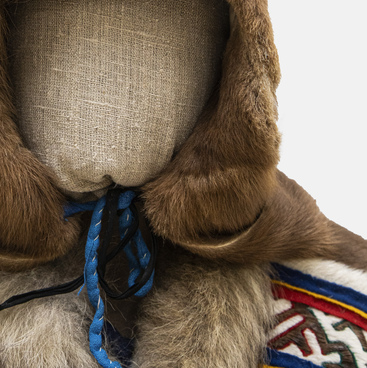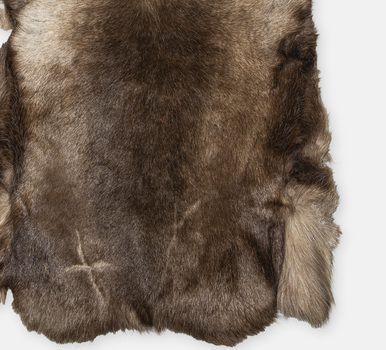The Kanin Nenets are a group of indigenous peoples of the North. They live on the Kanin Peninsula, near the shores of the White and Barents Seas. They can boast an unparalleled variety of headdresses, and each of their hats has its own name. The Nenets living in the tundra have one common term for different types of hats — “sava”.
A Nenets woman’s headdress naturally complements her panitsa, a reindeer fur coat with a front opening. The Nenets Museum of Local Lore houses a “nyanduy” hat worn by teenage girls and young women.
It is a high hat without a crown, made of two pieces of young reindeer fur, with short earflaps sewn to it. Square or triangular patches of various colors are sewn along the semicircular seam at the top — they have a length of up to 7 cm and a width of up to 4 cm. The ends of the patches flap in the wind.
The ear flaps, or the “sava’ ne” (literally, “the hat’s legs”), are sewn to the back of the hat. These are two long strips of kamus (a piece of hide from the lower leg of a deer), with a width of about 8 cm, generously decorated with mosaic patterns of white and dark fur and cloth inserts. Approximately in the center, the strips are joined together by copper chains or strings of beads. The long ear flaps are not tucked into the belt but hang loosely over the panitsa reaching below the waist.
The patterns are the essential elements of Nenets décor. Skilled craftsmen create amazing and intricate patterns that give life to material objects, making them unique, beautiful, and filled with sacred meaning. Nenets patterns are the result of close observation of nature. Each pattern has its own name and symbolic meaning, such as “deer’s horns”, “hare’s ears”, “chum house”, “birch branch”, “fox’s elbow”, and “perch scale”.
The headdresses of the Kanin Nenets are unique in shape,
décor, and color palette. The décor of the hats follows the traditional
sequence of colors: red, yellow, blue, or green. Each color has its own meaning
in the Nenets worldview. For example, red is the color of fire, energy, and new
life. For the Nenets, a hat is a personal item of clothing that should not be shared
with others, not even with family members.


